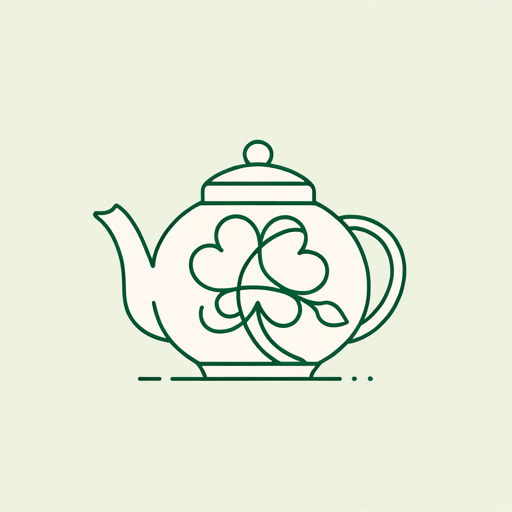34 pages • 1 hour read
Gish JenWho's Irish?
Fiction | Short Story Collection | Adult | Published in 1999A modern alternative to SparkNotes and CliffsNotes, SuperSummary offers high-quality Study Guides with detailed chapter summaries and analysis of major themes, characters, and more.
Summary and Study Guide
Overview
Who’s Irish? is a contemporary collection of short fiction by Gish Jen. In the collection, Jen, a second-generation Chinese American, explores what it means to be American and the experiences of the children of immigrant parents. Who’s Irish? was published in 1999 by Alfred A. Knopf. The titular story “Who’s Irish?” was originally published in The New Yorker, “Just Wait” was originally published in Ploughshares, “In The American Society” first appeared in The Southern Review, “Chin” was featured in the collection Shorts by Granta Books, and “Water Faucet Vision” was published in the 1988 Best American Short Stories anthology, as was “Birthmates,” which was featured in the 1995 volume of Best American Short Stories and then picked by John Updike for Best American Short Stories of the Century in 1999.
Plot Summary
Who’s Irish? consists of eight short stories, two of which are novella length, that explore what it means to be Chinese American for the second-generation children of immigrants and their parents. In “Who’s Irish?” the narrator and protagonist, a first-generation Chinese immigrant, babysits for her unruly Chinese and Irish American granddaughter. This story immerses the reader in the grandmother’s views and understanding of herself as a Chinese woman in binary opposition to the Irish family that her daughter married into. The story reaches its climax when the grandmother is seen as overstepping her bounds in disciplining the granddaughter and is sent to live with her son-in-law’s Irish American mother, Bess. Bess complicates the narrator’s understanding of what it means to be Irish when she notices how well Bess’s words get across to her children; they don’t question what she says. This story introduces some of the major themes that Jen returns to throughout the collection, such as the tensions between Chinese American children and immigrant parents, problems of being able to know and see each other both in family and in community, the ways language can fail individuals, and how people protect themselves from life and its various disappointments.
In “Birthmates,” the protagonist, Art Woo, is staying in the cheapest hotel he can find while he attends an insurance conference for work. He is knocked unconscious by a group of kids who hit him over the head with the telephone headset he is carrying for protection. After being nursed back to health by the mother of the kids who knocked him out, Art returns to the conference, where he is looking for his “birthmate” Billy, his competitor in the insurance business and foil to his being. Meanwhile, Art reflects on the loss of both his marriage and his unborn child and wonders if it's not too late to get out of the business, even if it is too late to right anything else in his life.
In “The Water Faucet Vision,” the narrator’s mother has just died, and her father no longer wants to live in their childhood home. This present-day crisis causes the narrator to recall a crisis from her childhood, when her father pushes her mother out the window and she loses her faith in God, miracles, and their ability to help her make sense of the world and her place in it.
“Duncan in China” follows the archetype of the hero’s journey. Duncan, the protagonist, is inspired to leave America and go to China to see if the beauty he witnessed in the Sung dynasty porcelains is alive in him and his heritage. Duncan is a dropout in America but is labeled as a “foreign expert” in China. He believes love is the thing he might be heading to China for, but this belief is thwarted when his love interest disappears and returns with her daughter and an unexpected proposition for Duncan. Later, Duncan meets some of his family in China, and they shatter his romanticized vision of both his family and himself as he ultimately refuses to help his cousin get to America. The knowledge he returns from his journey with is not about the Chinese side of himself that he hoped to discover, but instead, the thought that what makes him truly American, in his opinion, is his hope that things are going to work out.
“Just Wait” is a family drama told in five parts, mirroring the form of a five-part play. The story opens at the baby shower of Addie Wing and her husband Rex. Neither her brother Ned nor her stepfather are in attendance. When Addie’s mother, Regina, announces that Addie’s stepfather has left her, the crowd at the party decides that this is the perfect situation for Addie, as Regina can move in with her and Rex and help with the baby. Regina is adamant that she will not be the live-in help. As plans move forward for her to move in, it is decided that Addie will give up her office as a room for Regina. While the family is looking over the plans that Addie’s brother has drawn up to convert a closet in their condo into an office for Addie, Addie goes into labor.
“Chin” is told by the classmate of Chin, who lives next door to the narrator and his family. The narrator and his family observe Chin’s family, namely the physical punishments that are inflicted on Chin, and speculate about what is happening inside the house. While this story is ostensibly about “Chin,” as the title suggests, by the end of the story is it revealed that there is another looming but subtle tension in the narrator’s own family—that between his mother and father—that the narrator has not explored, instead trying to figure out what is happening behind the closed windows of Chin’s home.
“In The American Society” is told by the daughter and narrator of “The Water Faucet Vision.” This part of the family narrative focuses on her father taking over a pancake house. After the father’s management style causes many employees to quit, Booker, a Chinese man who is hiding from the immigration authorities, begins working there and brings a few of his friends. However, when there is tension in the kitchen between a few of the chefs, an employee calls the police, the police call immigration, and the father’s best employees are gone. Meanwhile, Mona, the narrator’s younger sister, has asked a friend’s mother to recommend her family, her mother specifically, for entrance into a country club. When this request is denied, the family is invited to a party at this friend’s house as a consolation. At the party, Ralph gets into an argument with the guest of honor and ends up throwing his suit in the pool. The entire family leaves and heads back to the pancake house, walking out on not only the party, but also the type of “American society” that the mother previously wanted to be a part of.
“House, House, Home,” the longest story in this collection, follows the life of Pammie, who is organizing a “children of color lunch” where her kids go to school. It is on this day that she meets her future love interest, Carter. Meeting Carter causes her to recall her relationship with her ex-husband, which began when she was a student, up to the present day, where she has three children, is living alone, and is on the cusp of a new love and possibly a new stage of life as well.
Related Titles
By Gish Jen




